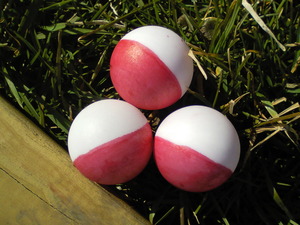The Glock 17 is probably the most tested and “beaten on” pistol out there. It has legendary stamina under the most adverse conditions and with the worst ammunition. Police forces around the world have adopted it. It remains the gold standard for polymer framed pistols around the world. I will break this down into the various tests I performed and the results.
The pistol used in the tests was a factory stock, Model 17 9mm. It came in the box with a manual, cleaning rod and brush, and two ten-round magazines. At the time of purchase I also acquired factory 17 round and 33 round magazines. I used a variety of ammuniton from off-the-shelf to my own personal handloads in lead and jacketed bullets. These tests took place over the course of a year as I had time and the conditions allowed.
Preparation: Break-in and sight-in. Break-in was 250 rounds of FMj ammo, fired slowly as per Glock factory reccomendation. Only one failure to feed (FTF) was noted and it was attributed to a faulty round of ammo. The factory sights needed a small amount of adjustment that was accomplished with a small punch and hammer suited to the purpose. the gun was cleaned and oiled befroe testing commenced.
Test 1: Standard slow fire 500 rounds. 12″ bullseye targets. Standard target shooting at 15 yards for 500 rounds. Test lasted about 6 hours with a break for lunch. ammo consisted of a mixture of Winchester FMJ, Ultramax FMJ, Speer Gold Dot HP and Lead RN reloads. All rounds fed and functioned perfectly. Average group size was 4″.
Test 2: Fast fire, double taps 500 rounds. This test string was conducted at IPSC silhouette targets at 10 to 25 yards. Ammo was same as above. Noted 1 FTE (failure to extract) about halfway through the test. Round was Ultramax Mnfg. 115 Gr FMJ. Case head seperated from body and vented some gas through ejection port. Firing stopped and weapon cleared. Bad case knocked out with cleaning rod. Use of Ultramax ammo discontinued in testing due to poor performance and possible safety concerns. Remaining testing was uneventful with perfect operation. Average group sizes: 10 yard-5″ 15 yard-7.5″ 25 yard-10.5″
Test 3: Cold weather testing. 500 rounds in fast fire, slow fire and double taps. Temp 38 deg. Targets varied from 8″ bullseyes to IPSC targets. No malfunctions. Pistol proved excellent handling while wearing normal gloves. It was slightly difficult to manipulate the trigger while wearing heavy gloves.
Test 4: The pickup box test. gun was loaded and thrown in the back of a farm pickup truck for a week. Daily use included 20+ miles of gravel roads and pasture travel. At the end of the week the pistol was dirty and covered in a thin layer of grit. Fired one 17 round magazine without a problem. Magazine catch was stiff upon ejection of magazine. Next mag was gritty upon insertion. Fired entire ten round mag without problem.
Test 5: Mud and Water. Test was commenced during a heavy rainstorm. Gun, ammo and magazines were all coverd in water and large quantities of mud. Excess was shaken off and gun was loaded and fired. this was the only total failure of the gun during the entire test. Mud had packed into the feed lips of the magazine and when the slide closed it pushed the mud into the chamber and jammed the weapon. The gun was cleared and rinsed off under a garden hose. Once the mud was cleared from the magazine it functioned perfecly. I fired around 250 rounds that day without any other failure.
Synopsis: Other than filling the gun with mud, i was unable to jam or otherwise make the gun malfunction after it was broken in. The failure with ultramax ammo was later confirmed by Ultramax to be a bad lot of ammo. I now carry this gun for self defense almost all the time. At around 500-600$ thye arent cheap, but can you really put a price on the utmost in reliability?
Reference:
- More information on glock pistols can be found at www.glockfaq.com


